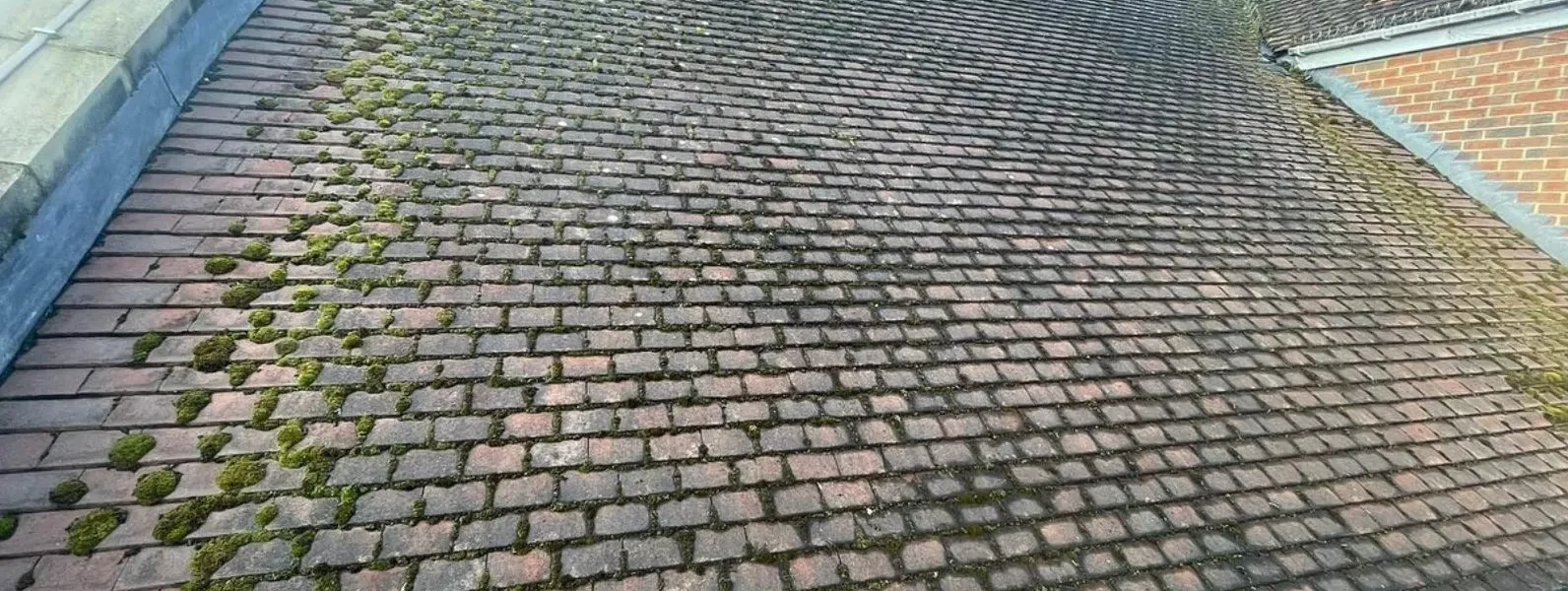Green algae on your roof is an eyesore and if left untreated can cause damage. It loves moist environments and is more common in humid areas with humid summers. Algae growth, black streaks and dark streaks can affect the curb appeal and look of your property. The good news is you can remove green algae with the right approach. Here’s a full guide to help you clean your roof, prevent algae damage and have a clean roof for the long term.
Step-by-Step Guide
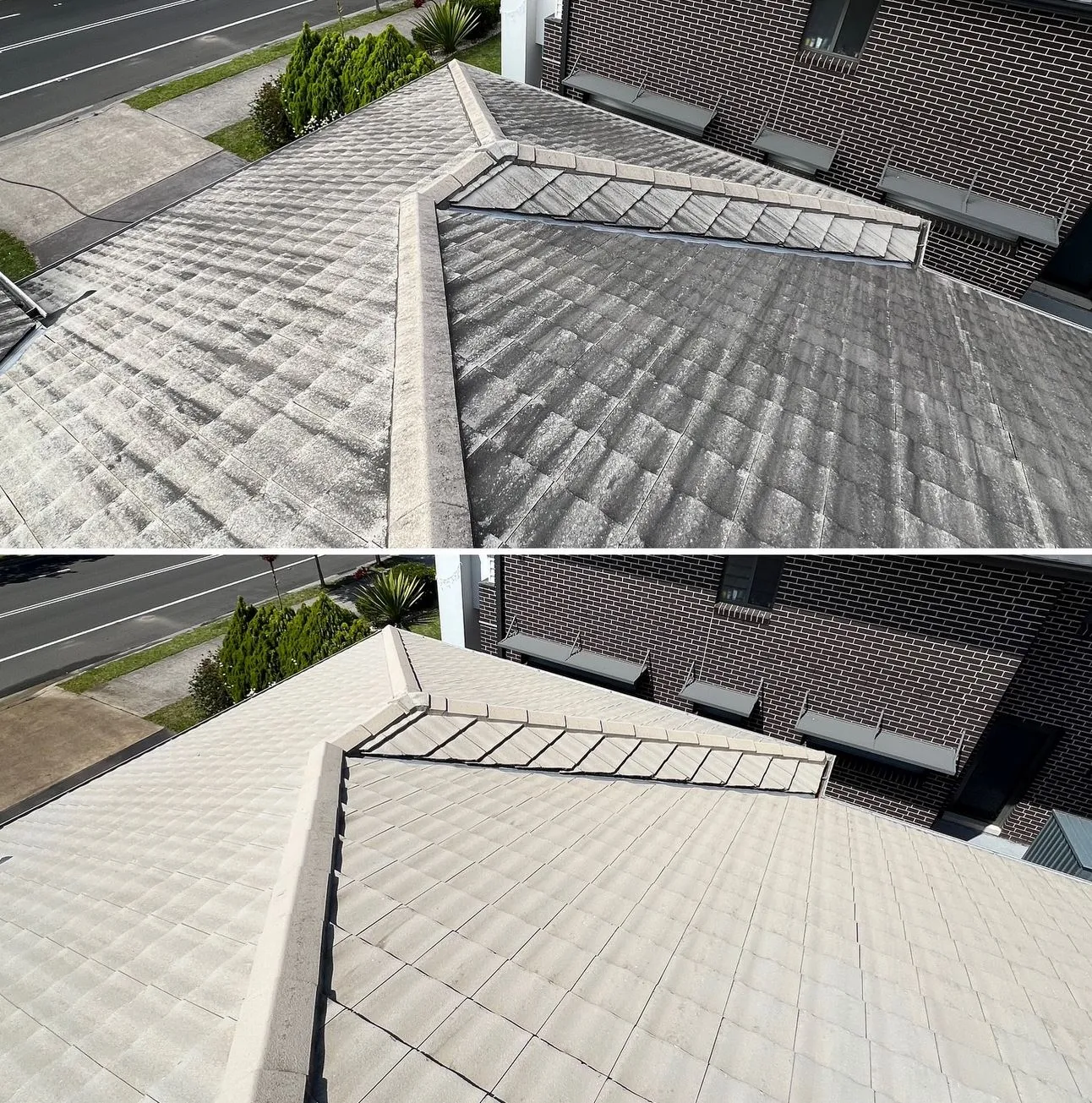
1. Safety First
Before you get on your roof make sure you have the right safety gear. Wear non-slip shoes, use a sturdy ladder and consider using a harness or safety rope for extra safety. Protective gear like gloves, eye protection and protective clothing will also help minimize health risks from mould spores and airborne spores.
2. Gather Supplies
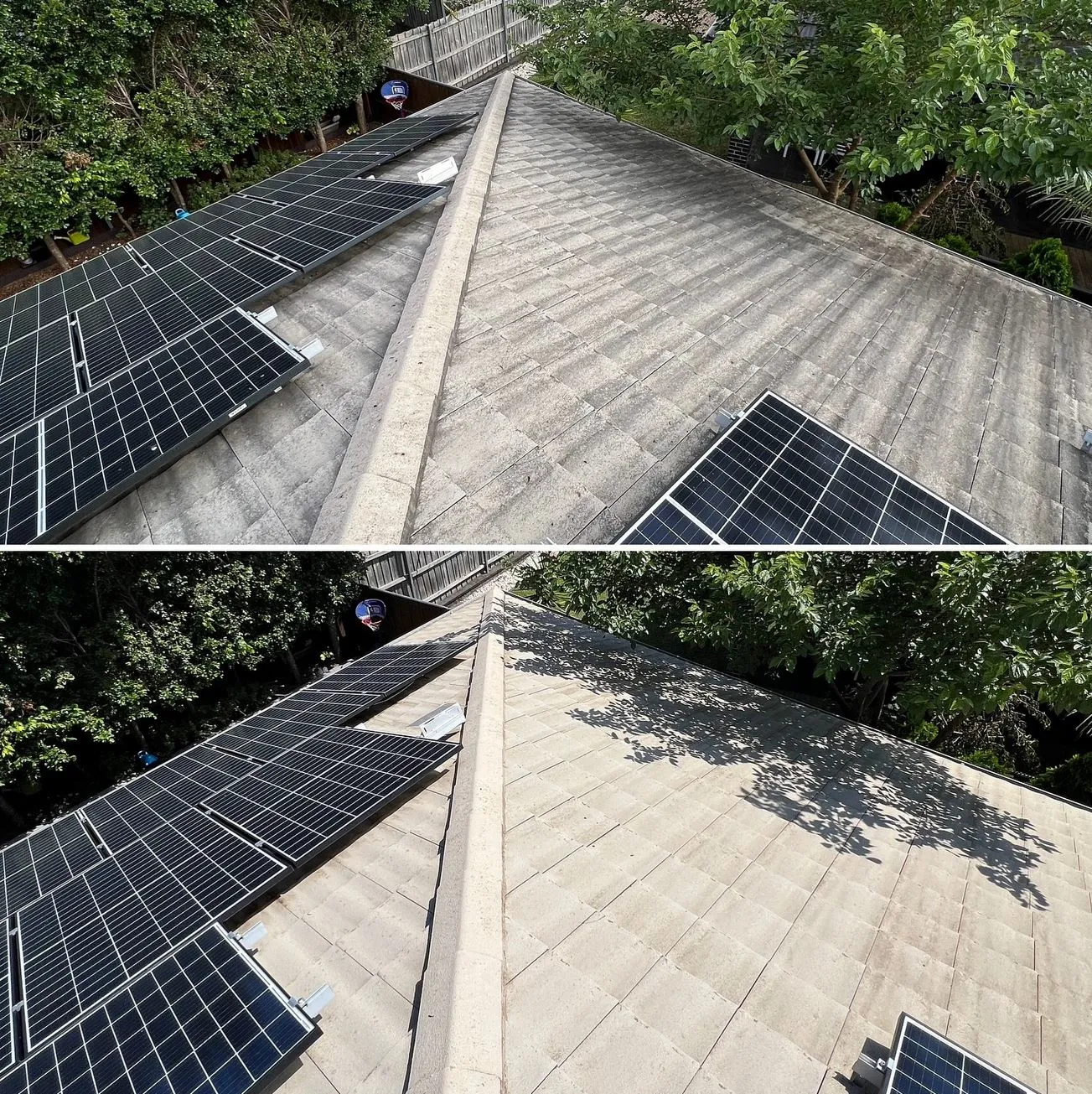
You will need:
- A garden hose with a spray nozzle or hose-end sprayer
- Soft-bristle brush, scrub brush or stiff brush
- Cleaning solution (you can buy an algae remover or make your own using gallons of water, bleach and dish soap)
- Protective gloves, eye protection and safety glasses
- Pump sprayer or backpack-type sprayer
- Optional: Moss killer or commercial moss remover
3. Apply the Cleaning Solution
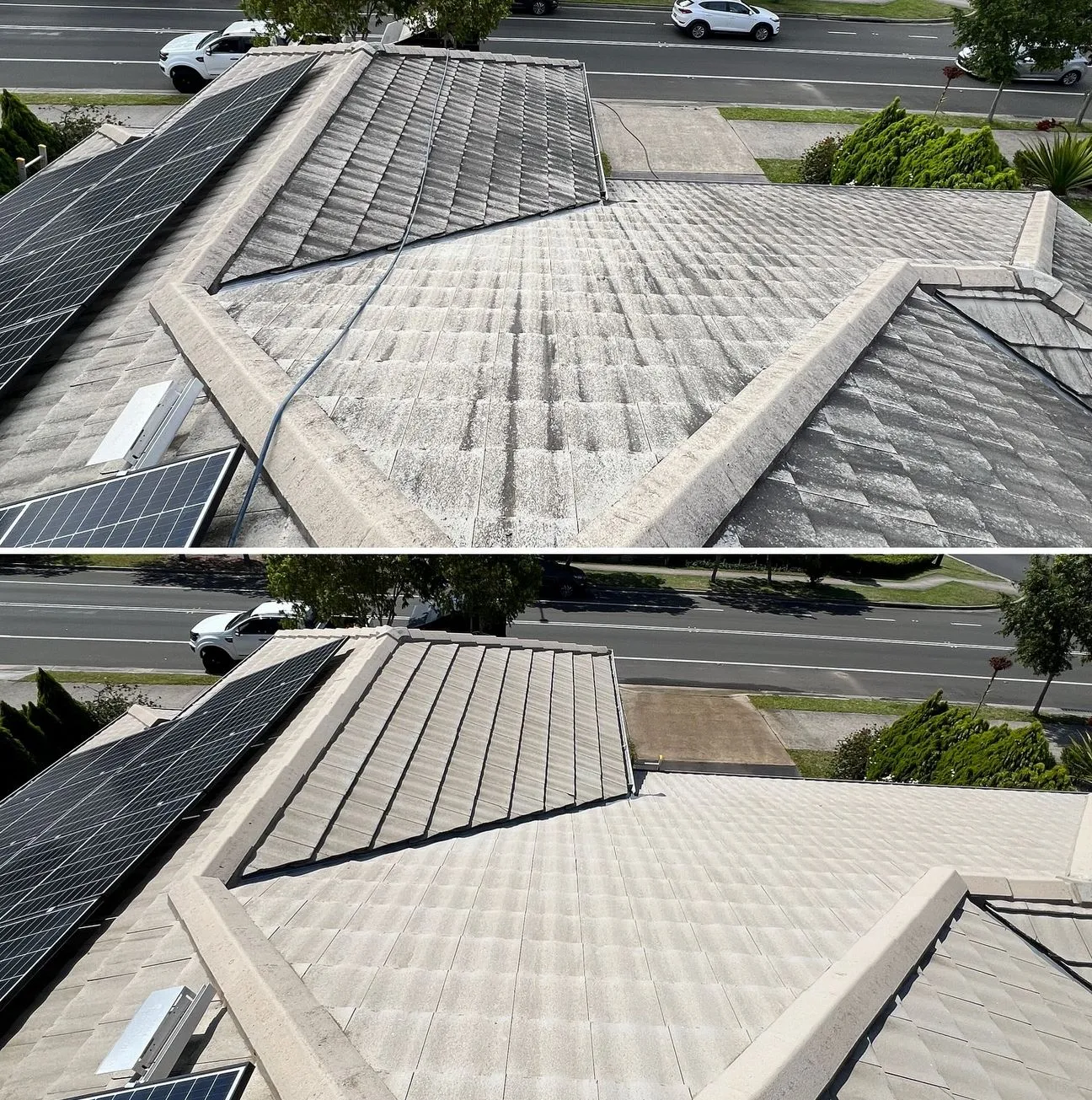
Mix your cleaning solution using a quart of bleach or chlorine bleach, gallons of water and dish soap. Spray it onto the affected areas with a pump sprayer or backpack-type sprayer. Don’t use harsh chemicals or caustic chemical treatments that can harm nearby plants or damage roof surfaces. Let it sit for 15-20 minutes to loosen the algae, green mossy growth or mould stains.
4. Scrub
Use the soft-bristle brush, scrub brush or stiff brush to gently clean the algae-covered areas. Focus on removing black algae stains, mould growth and lichen growth without damaging the granules on asphalt shingle roofs or other roofing materials. Don’t use aggressive methods that can cause moisture damage or structural damage to your roof deck or roof plane.
5. Rinse
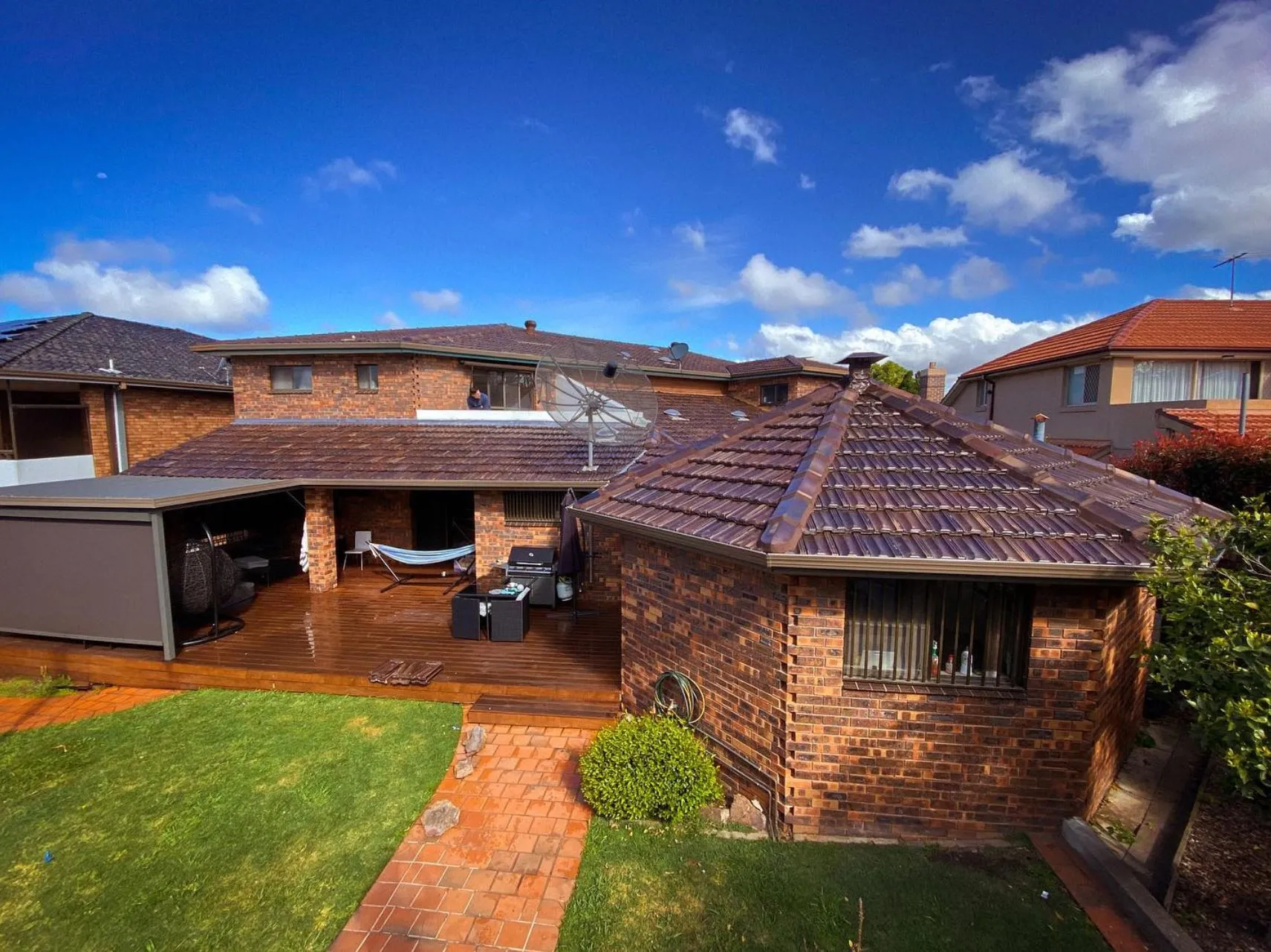
Rinse the roof with a garden hose or clean water, and make sure all cleaning solutions are gone. Don’t spray water upwards which can get under the shingles. Spray water downwards to protect your shingles and prevent moisture damage. For hard-to-reach areas, use a hose-end sprayer.
6. Inspect and Repeat if Necessary
After rinsing inspect your roof for any remaining black spots, dark streaks or algae discolouration. Repeat the process if necessary to remove any unwanted growths such as lichen on roof tiles or moss on roofs.
Preventing
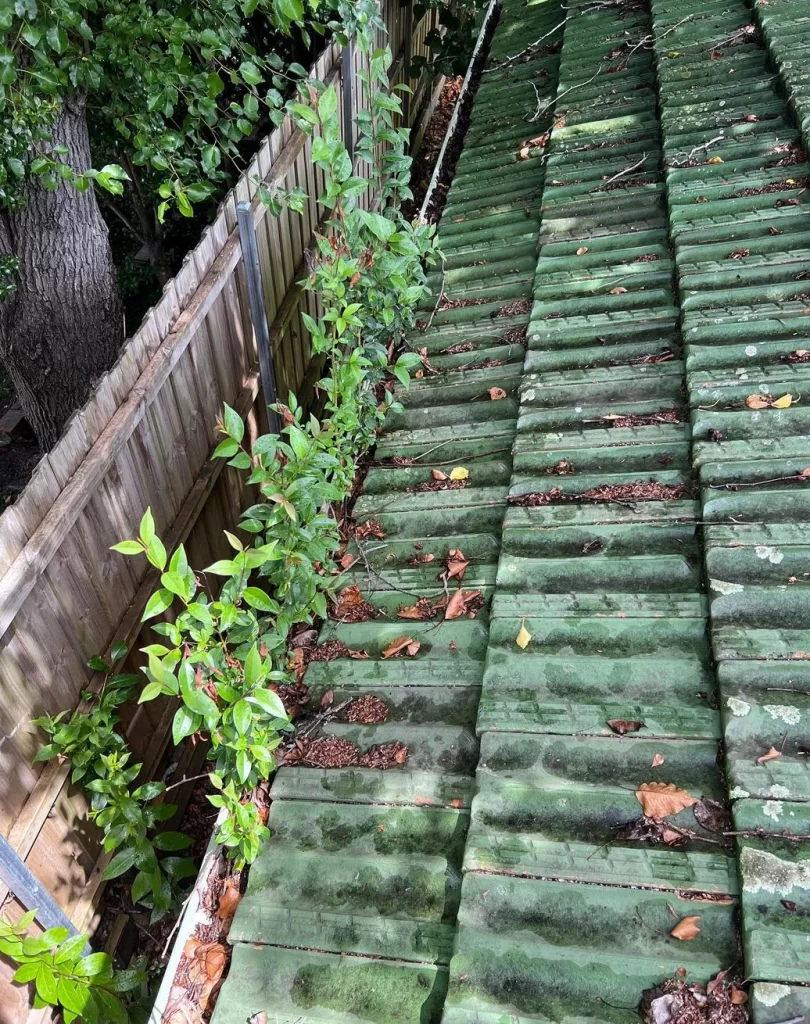
1. Zinc or Copper Strips
Install zinc or copper granules along your roof. These release ions when it rains and create an antimicrobial environment that prevents algae, moss and lichen growth. Copper strips are best for long-term algae removal and prevention.
2. Maintenance
Do regular maintenance, and roof inspections to identify and fix common issues like debris buildup and algae stains. Clean your roof annually and remove leaves, branches and other debris that can be food for bacterial growth and algae damage.
3. Trim Overhanging Branches
Trim overhanging branches to reduce shade and let sunlight on your roof. Sunlight dries out moisture and prevents green moss growth and algae on roof surfaces.
4. Algae Resistant Roofing
Consider using algae resistant roofing materials when you replace your roof next. These materials prevent algae, mould spores and other growths that are common on roofs in hot and humid summers.
5. Ventilation
Make sure your roof has good ventilation to reduce moisture buildup. Good ventilation minimizes the breeding ground for algae, mould and lichen and keeps your roof safe from future growth.
More Tips
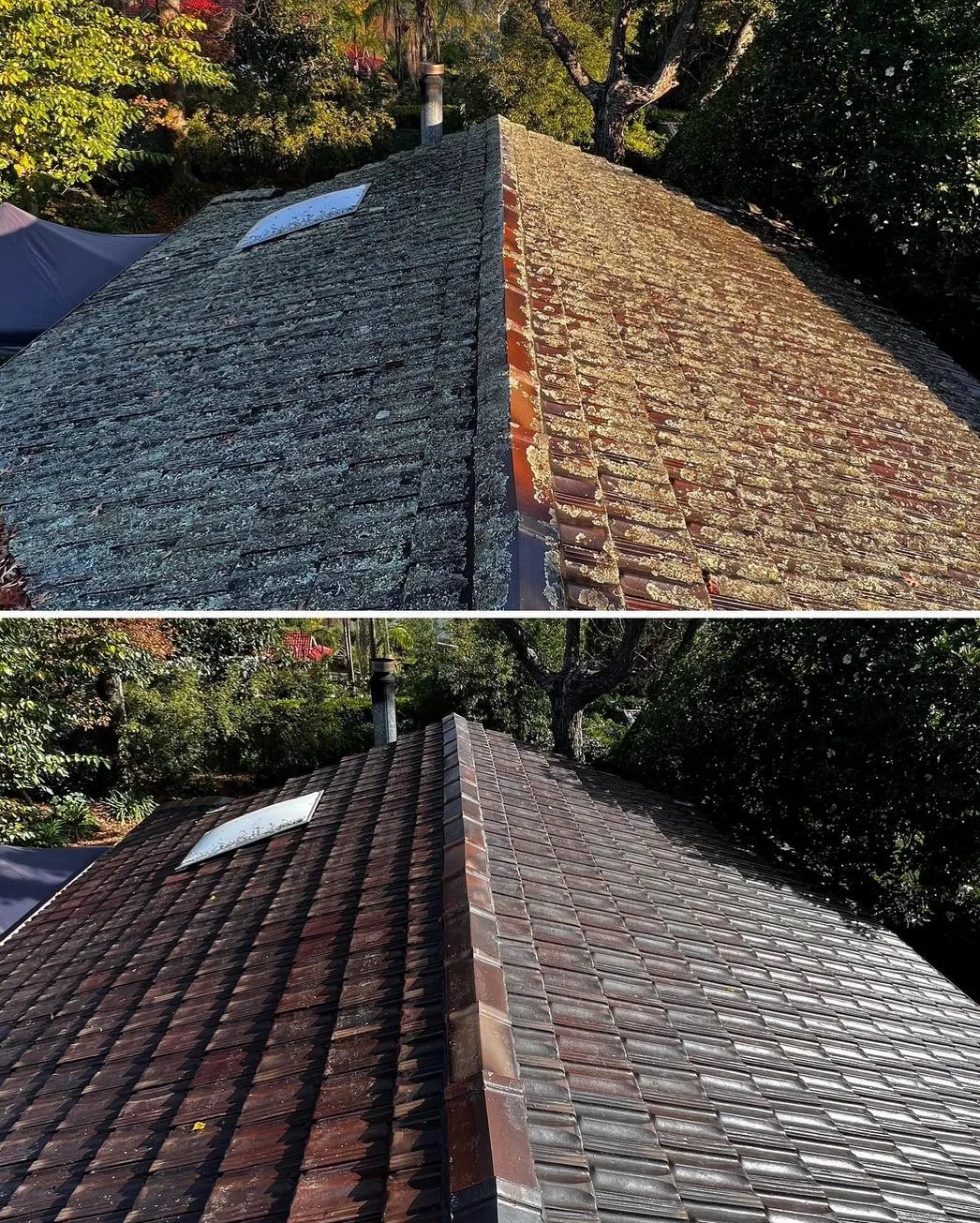
- Don’t pressure wash or use a pressure washer on asphalt shingles as it can damage the roofing material and cost you expensive repairs.
- Use a gentle cleaning method with a garden hose and a basic bleach solution to prevent damage to your roof deck and roof shingles.
- For severe algae damage consider hiring professional roof cleaners or roofing specialists. It’s often better to hire a professional cleaning service to get the best results and safety.
- Test any homemade solution or preferred solution on a small area before applying it to the whole roof.
By following these steps and tips you can keep your roof clean, avoid costly repairs and increase curb appeal for visitors to your property. For stubborn stains or big problems consider hiring professional roof cleaning services or roofing specialists as it’s often better to hire a professional cleaning service to get the best results and safety.
FAQ
Is green algae bad for my roof?
Yes, green algae holds water, which can cause water damage, structural damage and surface damage over time if left untreated. It can also hurt curb appeal and aesthetic appeal.
Can I use a pressure washer to remove algae?
Using a pressure washer or pressure washing can damage roofing materials, especially asphalt shingles. Stick to gentle cleaning with a garden hose or pump sprayer.
How often should I clean my roof?
Cleaning your roof once a year and doing regular maintenance, including roof inspections, can keep algae, mossy roofs and lichen off your roof tiles.
Do homemade solutions work?
Yes, a homemade remover using water, chlorine bleach solution and dish soap can work for algae removal. Always test a small area first and follow instructions.
Do zinc or copper strips really work?
Yes, zinc or copper strips have antimicrobial properties that create an environment unsuitable for algae, mould spores and airborne spores, so algae won’t grow back.
